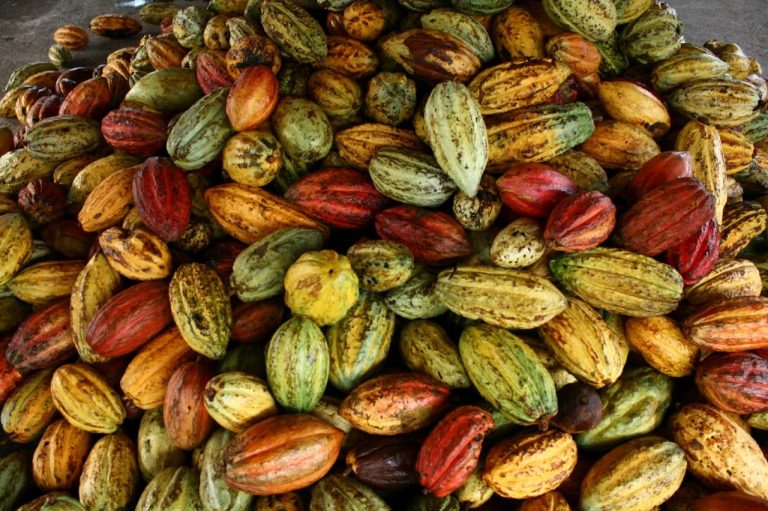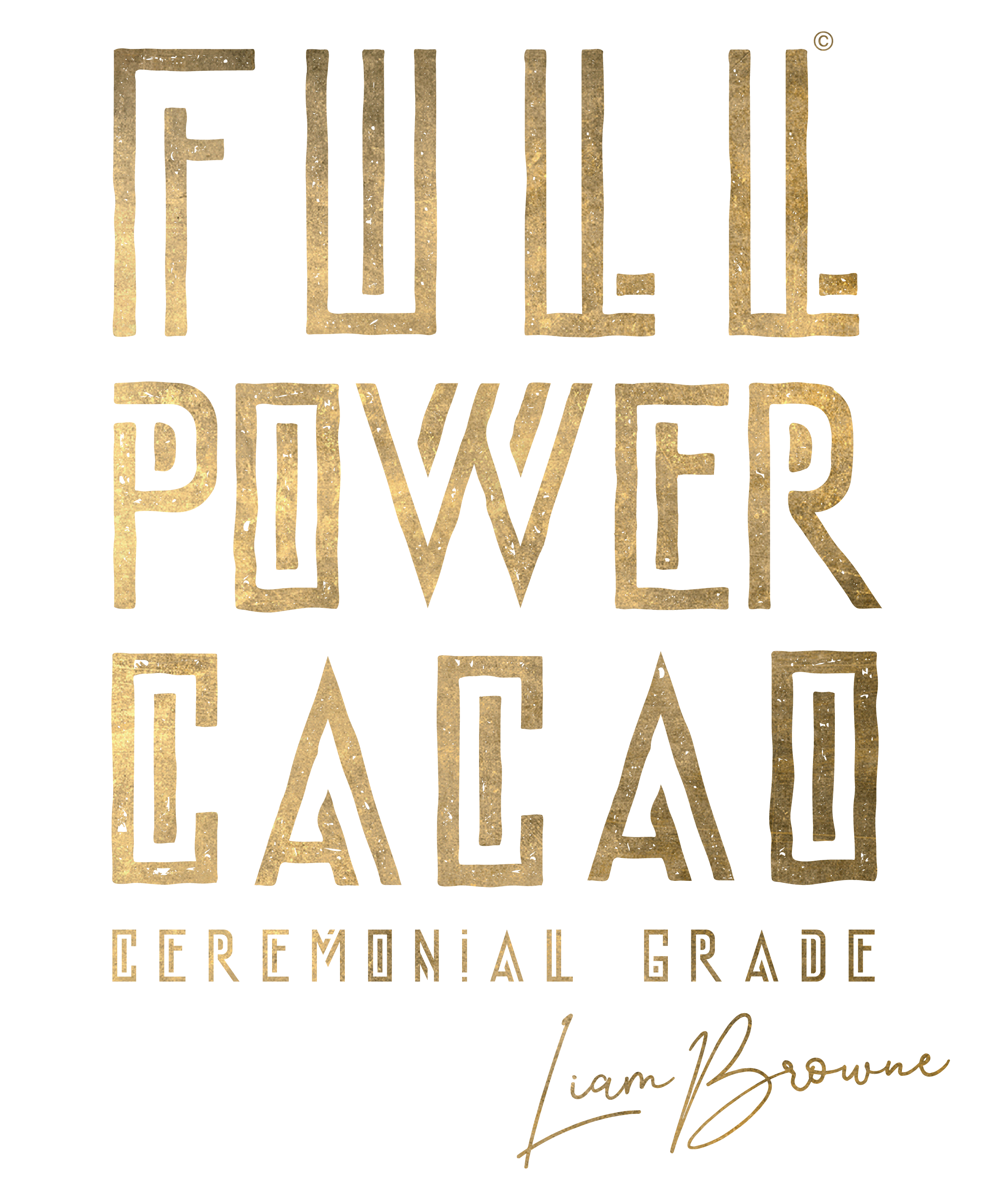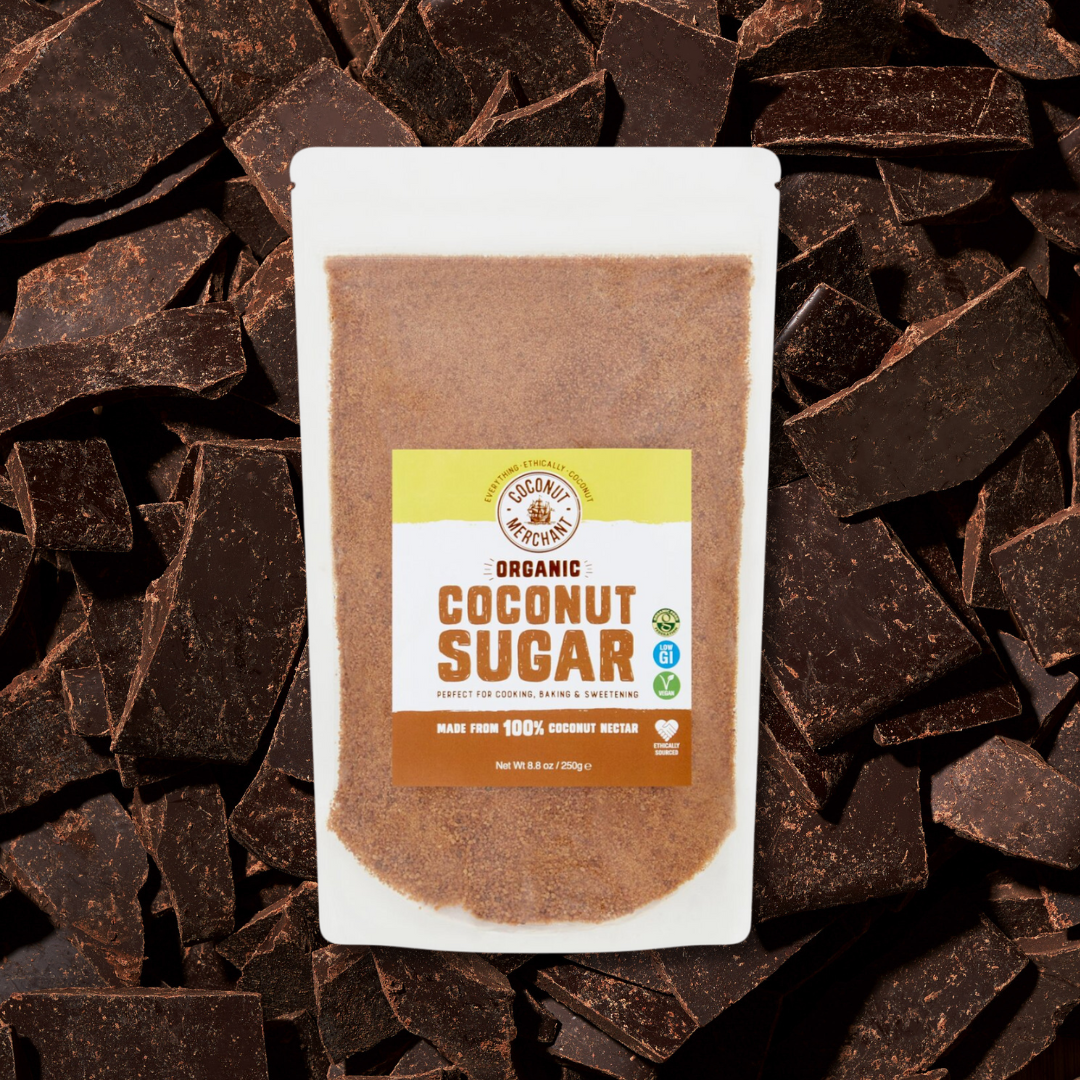SOME BACKGROUND ON CACAO •
“Eve left the garden of eden for chocolate”
Theobroma cacao is what our modern day chocolate is made from, although as you’ll see, there are significant differences between a bar of Cadbury’s or Hershey’s chocolate and the mystical magical (and super-healthy) world of chocolate we are about to explore together.
The term ‘cacao’ is derived from kakaw in the Mayan Tzeltal and K’iche’ languages. The Aztecs who came before them called the cacao bean ‘Cacahuatl’ and their sacred cacao drink was called ‘Xocoatl’, which is where the term ‘chocolate’ derived from. Often, the terms cocoa and cacao are inter-used but this really stems from a misunderstanding between cacao as chocolate and cocos as referring to coconuts. The Greek title Theobroma literally translates as “god food” but is also referred to as “food of the gods”.
Cacao trees are a tropical evergreen species, growing in the lower belt of rain forests only within 20 degrees either direction of the equatorial belt (or perhaps that is the cacao belt). There are two main species, Crillo and Forastero, and a hybrid third called Trinitario. Within these main families there are many other variations and strains.
The tree produces fascinating and rather animate looking 5 petaled flowers (which are pollinated by tiny flies rather than bees) and beautiful, rough-skinned pods which hold the cacao seeds, beans or nibs cushioned in a sweet, sticky pulp. It is the beans that are harvested and processed to produce chocolate. It takes about 5 years before the tree begins to produce cacao and about 10 years before it really comes into fruition.
The rich chocolate aroma, depth and potency of cacao is developed through an age-old fermentation process. The seeds and pulp are removed from the hard pods and placed in wooden crates or canoe-like sweatboxes (traditionally, it was a hole in the ground) under large banana or plantain leaves and left for several days whilst they germinate and ferment in the heat. It’s a skilful, alchemical process and the timing needs to be just right! The beans are then spread out in the sun to dry. From here, the cacao beans are either sold at local markets, distributed directly or bought by commercial chocolate producers where they are then roasted, crushed, pressed and conched to make chocolate.
Where does cacao come from?
The genus Theobroma cacao has been traced back millions of years to the east of the Andes in South America. And the traditions of cacao usage can be traced back to the rainforests and high lands of Central America. But there are many species of this tree that are being cultivated through out Central and South America, as well as South-East Asia, West Africa and the Pacific.
Date of cacao use
The Olmec, who were a mysterious Mesoamerican civilisation based around the Gulf of Mexico and considered to be forerunners to the Aztecs and Mayans, gave us our first records of ceremonial cacao use dating back to around 2000 BC. But it was really the Aztecs and Mayans (with the help of the Spanish conquistador records) that have gifted us with a rich history of ceremonial cacao use.
Creation Myth
The ancients peoples of Mesoamerica really brought to life the magic of the cacao bean. It was profoundly revered in their cultures and considered to be a divine and magical gift from the gods. Cacao was the divine ambrosia, the elixir of life, a sacred medicina, ritual aid, potent aphrodisiac, a source of economical exchange, and it provided political and social leverage and as well as being an indicator of spiritual status.
Both the Aztecs and Mayans held creation myths around the introduction of cacao and it was said that the gods discovered it in the Mountain of Sustenance (which other mythologies indicate is possibly near the Andes) along with many other life-giving, nourishing medicinal foods. It is said that the great god Quetzalcoatl, the magnificent plumed serpent, stole it and brought it on the beam of the morning star (Venus) as a gift to the people of Mexico. Event more interesting, considering some of the complex and tumultuous history that was to follow regarding women and chocolate, was the understanding that the sacred knowledge on how to prepare, roast and press the cacao beans into the sacred chocolate elixir (which was believed to gift wisdom) was very specifically given as divine instruction to women.
The sacred cacao bean was also associated with Xochiquetzal, an Aztec fertility maiden goddess associated with love, beauty, childbirth, feminine sexual power and female crafts and practices. It was also in the stewardship of Tlaloc (He Who Makes Things Sprout) – Xochiquetzal’s consort and fertility god, wrathful deity and overseer of rain, lightening, thunder, floods and drought. The sacred marriage and partnership of Xochiquetzal and Tlaloc were tasked with the care and adoration of the cacao tree and it’s medicine of pods, seeds and flowers.
Who drank it
In Olmec, Aztec and Mayan society, the drinking of cacao elixir was really the privilege and immense indulgence of the royal, rich, noble and spiritually sanctified. This may have begun before cacao became an abundant agricultural crop and therefore was a rare, treasured resource and craft. But as the social significance and divine value of cacao grew, it became reserved for the aristocracy, politically powerful and spiritual-ritual domains of priests. It more or less remained this way until it was introduced to the Spanish conquistadors and left the shores of Mesoamerica to make it’s way to Europe and the rest of the world.
How did they drink cacao
The alchemy of the cacao drink, Xocoatl, took many different forms depending on what it was being used for and who it was being prepared for. A far cry from the sweet creamy hot chocolate we know today, it was originally a bitter, roasted savoury and very spicy drink. A traditional recipe was for it to be mixed with roasted corn flour, chilies, vanilla, cinnamon, salt and water. The beverage was thickened and frothed by pouring the liquid from one vessel to another until it created a surface foam. This foam was believed to carry the spirit of the plant as a medicinal and divine aid and blessing. Once contact with the Spanish was made, the creation of a wooden whisk, called a molinillo, was introduced to do this job instead of the vessel to vessel method.
However, most likely any degree of spice, heat and consistency would have been known, as well as other alchemical concoctions and synergies for medicinal, ritual, general, celebratory and shamanic use. But as a spiritual aid, mystic practice and religious sacrament, there are many who believe that a powerful psychotropic blend of cacao and psilocybin mushrooms was ingested with great appeal and reverence, and in particular at spiritually significant rituals, worship and celebrations. The synergy and potentiating capacity of cacao with psychedelic tryptamines is a strongly suggested possibility for shamanic and mystical encounter within Mesoamerica.
What did they drink it for
Cacao was considered to be a divine ambrosia, spiritual elixir, sacred medicine healer and ritual aid. In ritual use, cacao became mostly reserved for the male elite and in this context, and with the understanding that it was intoxicating and sexually stimulating, it was generally forbidden for women and children.
Mayan priests used consecrated Xocoatl for rituals, ceremonies, festivals, offerings, sacred communion and sacrifices involving blood rituals with occasional piercing and lancing of the earlobes and penis. A potent and deeply magical mix of blood and chocolate was a regular synergetic Mayan ritual practice and offering.
Cacao was considered to be a powerful sexual tonic and life-force elixir and it was regularly included as part of wedding rituals and life celebrations. Montezuma, the Aztec emperor, is said to have consumed copious amounts of medicinal chocolate before entering his harem in order to conjoin with his plentiful concubines, which propagated it’s reputation as a potent aphrodisiac. In addition to this, Mayan baptism rituals were conducted with the anointing of the child’s head, feet, hands and face with a ground paste of water, cacao seeds and flowers, and cacao beans were ingested by exhausted women in long, drawn out labour to strengthen the body and support the birthing process.
Cacao was also revered as a sacred plant medicine and healer. Along with it’s aphrodisiac and longevity benefits, it was also used to assist a vast array of internal bodily pain, external wounds and burns, lung and abdominal issues and various diseases. Additionally, it was also employed to pre-battle warriors for sustenance, courage and fortification.
The Florentine Codex (1590 AD), collected and put together by Spanish priest Bernardino de Sahagun over a 60 year period, lists around 300 medicinal uses for the cacao plant. Many Spanish medical records noted it’s use and supportive healing for a huge and diverse range of issues including angina, asthma, cancer, fever, agitation and emaciation, although it was also noted that too much of this intense substance was responsible for states of dizziness, confusion, sickness and intoxication.
How did cacao spread & evolve
Although Christopher Columbus was the first explorer to encounter the sacred cacao bean, it was the Spanish conquistador Hernan Cortés who was responsible for bringing the cacao bean {and the initial recipe for Xocoatl} to the attention of Spanish King and Queen. It became a novel and fashionable beverage and soon spread amongst Europe’s royal courts and through out most sectors of the Catholic religious domain (even making it’s way to the Pope at the seat of the Vatican itself). It spread throughout the noble classes, and eventually speciality Chocolate Houses began to appear and flourish around the mid 17th century as inspired gathering places for the social elite and Avant Garde as cacao’s European popularity thrived. In particular, it became a household delicacy at the Palace of Versailles as the French fervently embraced it’s sensual, erotic and intoxicating nature. However, chocolate created such a stir that it was temporarily vilified as a dangerous drug during the French Revolution!
Back in Chiapas, Mexico, there was another chocolate revolution brewing thanks to the Spanish nuns who were so enamoured by the blessed cacao beverage that they even began to drink it during Mass at the immense perturbation of more “serious, virtuous” members of the Catholic Church. There were attempts to suppress this phenomena but they were in vain as the nuns refused to give up their chocolate sacrament, adamant that it supported their worship and the fortification of their fragile digestive health. Eventually a Chiapas bishop was even poisoned for attempting to prohibit local women from partaking in the elixir at church. Clearly, this was powerful stuff and people became willing to fight for it.
(Vive la Révolution Rouge de chocolat!!)
Nonetheless, the success of cacao continued to grow around Europe and during the 19th century, it became revered as a magical cure-all remedy. In 1828, the processing and production of chocolate began to change as a result of new methods established by Dutch Cacao producer Van Houten. And then eventually, a Swiss company began to add condensed milk to create a creamier, milky variety of chocolate. This was the beginning of what we know as commercial chocolate today – albeit a greatly diluted, less spicy and highly processed version of what it initially looked like.



